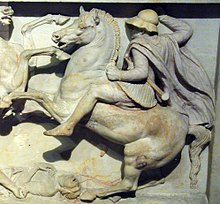LearnPenner wrote:Actually, you were the one trying to say that this was some riot by longshore men and that this wasn't the Draft Riots.Okeefenokee wrote:The new york draft riots depicted in the film, where blacks were hunted down and killed in the streets, happened in 1863, after emancipation.Penner wrote:Gangs of New York depicted the Draft Riots:
Learn
to
read.
to
read.
Okeefenokee wrote:There were riots in the north after the war's purpose was restated to be emancipation.
The New York draft riots (July 13–16, 1863), known at the time as Draft Week,[3] were violent disturbances in Lower Manhattan, widely regarded as the culmination of working-class discontent with new laws passed by Congress that year to draft men to fight in the ongoing American Civil War. The riots remain the largest civil and racial insurrection in American history, aside from the Civil War itself.[4]
U.S. President Abraham Lincoln diverted several regiments of militia and volunteer troops from following up after the Battle of Gettysburg to control the city. The rioters were overwhelmingly working-class men, mostly Irish or of Irish descent, who feared free blacks competing for work and resented that wealthier men, who could afford to pay a $300 (equivalent to $9,157 in 2017[5]) commutation fee to hire a substitute, were spared from the draft.[6][7]
Initially intended to express anger at the draft, the protests turned into a race riot, with white rioters, predominantly Irish immigrants,[4] attacking blacks throughout the city. The official death toll was listed at either 119 or 120 individuals. Conditions in the city were such that Major General John E. Wool, commander of the Department of the East, said on July 16 that "Martial law ought to be proclaimed, but I have not a sufficient force to enforce it."[8]
The military did not reach the city until after the first day of rioting, by which time the mobs, primarily ethnic Irish, had already ransacked or destroyed numerous public buildings, two Protestant churches, the homes of various abolitionists or sympathizers, many black homes, and the Colored Orphan Asylum at 44th Street and Fifth Avenue, which was burned to the ground.[9]
The area's demographics changed as a result of the riot. Many blacks left Manhattan permanently (many moving to Brooklyn). By 1865 their population fell below 10,000, the number in 1820.
https://en.wikipedia.org/wiki/New_York_City_draft_riots[/quote]The Emancipation Proclamation of January 1863 alarmed much of the working class in New York, who feared that freed slaves would migrate to the city and add further competition to the labor market. There had already been tensions between black and white workers since the 1850s, particularly at the docks. In March 1863, white longshoremen had refused to work with blacks and rioted, attacking 200 black men. In this area of the city, there were a variety of interracial venues of brothels and bars, and neighborhoods were mixed in terms of residents. Men competed as hacks (carriage drivers), craftsmen, and in other jobs.
Riots plural. Race riots. Hundreds of black workers being attacked by white workers. Hundreds of blacks being killed in the streets. Black homes being burned down. They even burned down a black orphanage. All of which occurred after the January 1863 emancipation.

